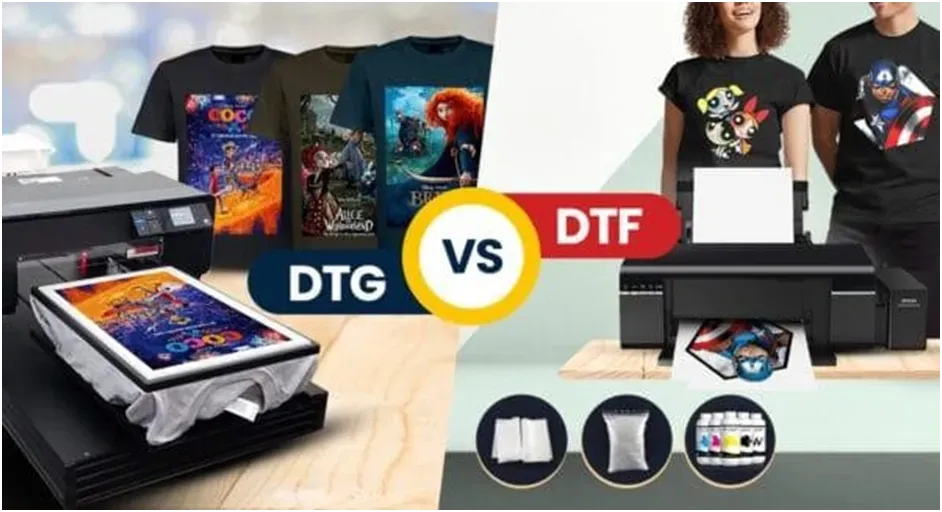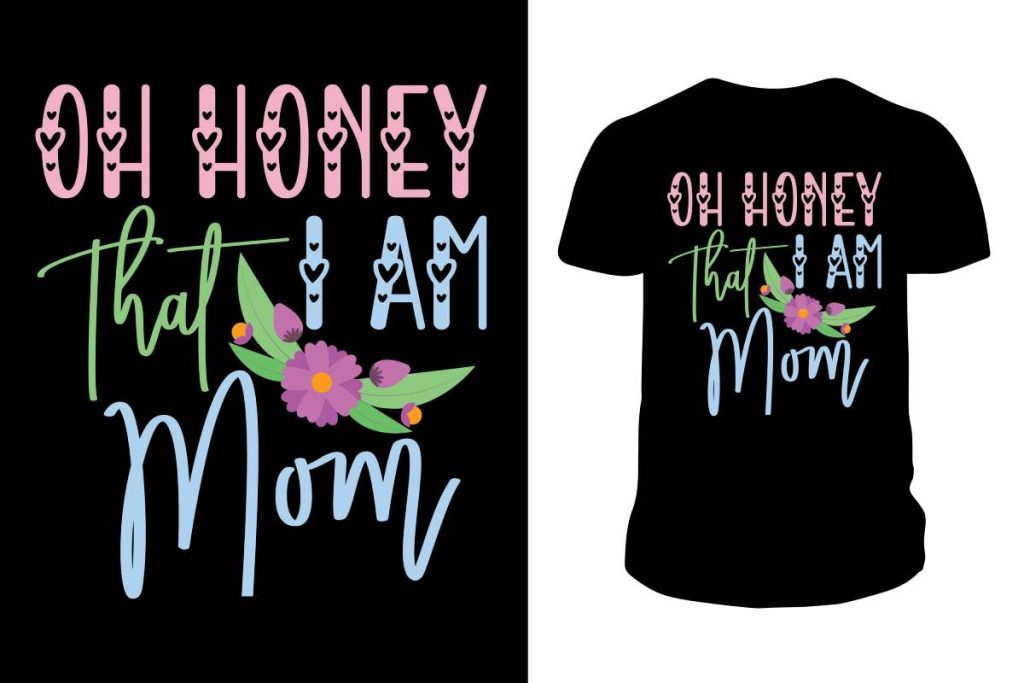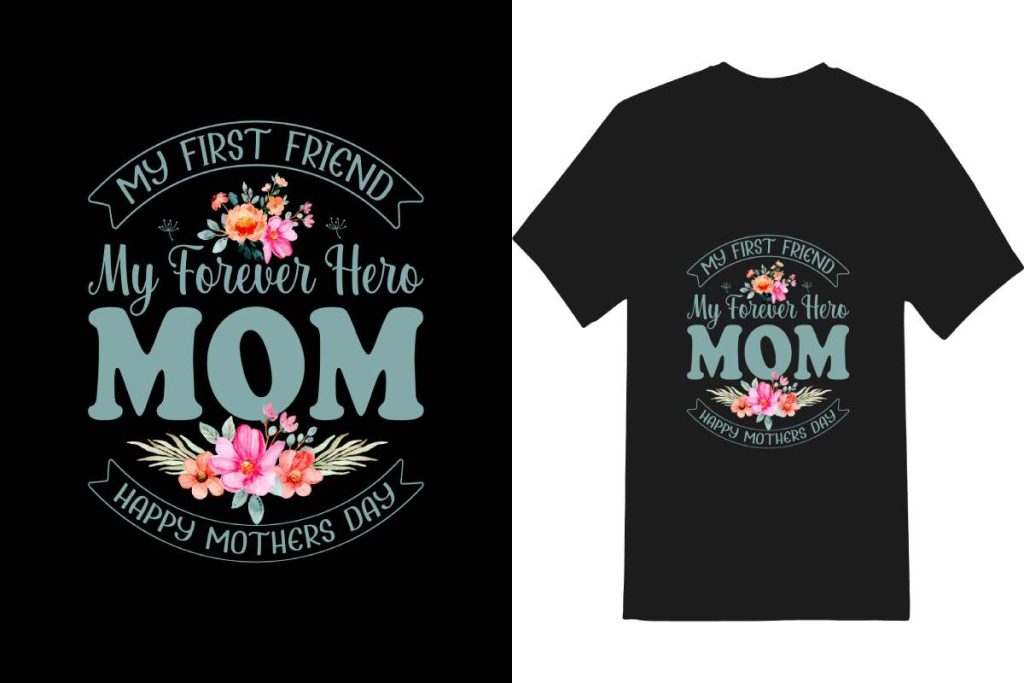The ongoing debate between DTF Transfers vs. DTG Printing has become a hot topic in the world of custom apparel printing. As businesses and individuals strive for high-quality garments that truly represent their artistic vision, understanding the distinctions between these printing methods is crucial. DTF printing, known for its vibrant colors and versatility, is gaining traction due to its ability to print on a wide variety of fabrics, including dark materials. Meanwhile, DTG printing appeals for its detailed outputs and soft feel on natural fibers, making it a go-to for those prioritizing the quality of intricate designs. In this article, we’ll dive into the benefits of DTF printing versus the advantages of DTG printing to help you choose the best printing method for your unique needs.
When it comes to creating customized clothing, understanding the nuances of the two primary techniques—DTF and DTG printing—can make all the difference. Direct to Film (DTF) is praised for its ability to transfer lively designs onto numerous fabric types, while Direct to Garment (DTG) utilizes specialized inkjet technology to apply artwork directly onto the garment. These printing processes not only dictate the aesthetics of your apparel but also influence the durability and feel of the final product. As more businesses seek sustainable printing methods, knowing which approach suits their operational goals becomes increasingly important. In this discussion, we’ll explore how these contrasting methods cater to varying demands within the custom apparel industry.
Understanding DTF Transfers
DTF transfers, or Direct to Film transfers, are becoming increasingly popular in the world of custom apparel printing. This method involves printing your design onto a special film before transferring it to the fabric using heat. The result is strikingly vibrant colors and intricate details that can be applied to a variety of materials, from cotton blends to synthetics. This flexibility allows businesses to cater to a broader audience, as they can create designs that stand out on different fabric types.
One of the major benefits of DTF printing is its durability. The inks and films used in this process are designed to withstand repeated washings and heavy use without fading. This attribute makes DTF a preferred choice for custom apparel that requires both aesthetic appeal and longevity. Furthermore, the technology behind DTF printing is continually evolving, offering even more robust solutions that meet the demands of modern printing needs.
The Advantages of DTG Printing
Direct to Garment (DTG) printing is another innovative technique for producing custom apparel that has gained significant traction. Unlike DTF, which transfers prints from film to fabric, DTG printers apply ink directly onto the garment, mimicking the functionality of a standard inkjet printer but designed specifically for fabrics. This method is especially effective on natural fibers like 100% cotton, allowing for intricate designs with a soft hand feel—an essential quality for wearable items.
DTG printing also offers rapid turnaround times, particularly beneficial for small orders or one-off designs. The absence of elaborate setup processes makes it cost-effective for businesses seeking to fulfill individual customer requests without incurring significant upfront costs. Additionally, as sustainability becomes a focal point for many brands, DTG’s lower output of waste compared to methods like DTF makes it an attractive option for eco-conscious entrepreneurs seeking to minimize their environmental footprint.
DTF Printing vs. DTG Printing: Key Differences
When comparing DTF printing and DTG printing, several factors come into play that can influence a business’s choice. DTF is known for its adaptability to a wider range of fabric types, which includes dark and synthetic materials where DTG might struggle. This versatility is crucial for businesses that aim to offer a more inclusive product range to cater to diverse customer preferences. Furthermore, DTF prints are typically more resistant to washing and wear, making them suitable for applications where durability is a priority.
Conversely, DTG shines with its ease of use and lower initial investment, particularly appealing for startups. The direct application of ink allows for a quicker production process, reducing the time from design to final product. However, the pre-treatment needed for dark fabrics adds complexity and cost to DTG processes, potentially deterring businesses from opting for this method when catering to designs on a wider variety of fabrics.
Current Market Trends in Custom Apparel Printing
The landscape of custom apparel printing is rapidly evolving, with more businesses leaning towards DTF and DTG methods as they align with market demands. DTF printing is gaining popularity due to its flexibility, making it an excellent option for bulk orders and businesses looking to diversify their product lines. As companies worldwide emphasize high-quality designs and durable prints, DTF technology continues to enhance its capabilities, attracting a wide range of industries and applications within the apparel sector.
On the other hand, DTG printing remains a go-to for smaller businesses and designers focused on quick turnaround times and unique, one-off designs. The efficiency of DTG allows for on-demand printing without holding inventory, which appeals to modern consumers seeking personalized products. As custom apparel trends move towards sustainability, the market is witnessing a balanced growth between these two methods, each catering to different niches and preferences.
Environmental Impact of DTF and DTG Methods
As the apparel industry becomes increasingly aware of its environmental footprint, the comparison of DTF and DTG printing extends beyond practicality to sustainability. Recent studies have shown that DTG printing typically produces less waste, particularly plastic waste, compared to DTF methods. This reduction in environmental impact is becoming a critical factor for brands seeking to implement sustainable practices within their production processes.
Moreover, advancements in DTG technology are leading to more eco-friendly inks and processes that further minimize negative environmental effects. Brands focused on sustainable printing methods can leverage DTG as a part of their identity, promoting not just quality but also responsible consumption. Ultimately, understanding these ecological implications helps businesses align their production processes with their corporate social responsibilities, appealing to environmentally-conscious consumers.
Choosing the Right Printing Method for Your Business Needs
Deciding between DTF and DTG printing largely depends on your specific business requirements, including fabric types, customer preferences, and production volumes. For companies aiming to produce a versatile range of custom apparel with a focus on longevity, DTF might be the stronger choice due to its ability to perform well across multiple fabric types, including darker materials. The durability and vibrancy of DTF prints further enhance its appeal for high-performance apparel.
Alternatively, businesses focused on fast production and lower costs may find DTG printing the more viable option, particularly for small runs or bespoke items. The agility of DTG allows for quick turnarounds that cater to spontaneous customer demand without significant upfront investment. Assessing product goals, target markets, and operational capabilities will guide brands to the most suitable printing method for their unique situation.
Frequently Asked Questions
What are the main differences between DTF transfers and DTG printing in custom apparel?
DTF (Direct to Film) transfers involve printing designs onto a special film before transferring them to fabric, allowing for vibrant colors on various materials. In contrast, DTG (Direct to Garment) printing directly applies ink to the fabric itself, offering detailed prints primarily on 100% cotton. The choice between DTF and DTG printing should depend on the fabric types, desired print quality, and production scale for your custom apparel.
What are the benefits of DTF printing compared to DTG printing?
The benefits of DTF printing over DTG printing include superior versatility on different fabric types, including dark and synthetic materials, and excellent durability for vibrant designs. DTF is particularly advantageous for businesses requiring high-quality prints on a range of garments, making it a strong candidate among the best printing methods for fabrics.
Is DTG or DTF printing more cost-effective for small businesses?
For small businesses, DTG printing often presents a more cost-effective solution due to its lower initial setup costs and quick turnaround for small production runs. DTG allows for on-demand printing without needing extensive inventory, making it feasible for startups in the custom apparel printing market. However, high-volume needs might lean towards DTF for efficiency despite higher upfront costs.
How do DTF transfers and DTG printing compare in terms of durability and print quality?
In terms of durability, DTF transfers generally offer excellent longevity and resistance to wear, especially on various fabric types. DTG printing provides fine detail and softness on cotton fabrics but may lack durability on dark or synthetic materials unless a pretreatment is applied. Therefore, the print quality and durability should align with the intended use of the apparel.
What environmental considerations should one keep in mind when choosing between DTF and DTG printing?
When choosing between DTF and DTG printing, consider that DTG is often viewed as more sustainable due to producing less plastic waste. Brands with eco-friendly practices may prefer DTG printing for its lower environmental impact, aligning with sustainability trends in custom apparel printing. It’s crucial to evaluate your brand’s commitment to the environment when deciding on a printing method.
Which printing method is better for intricate designs: DTF or DTG?
DTG printing excels in producing intricate designs with fine details and vibrant colors directly on fabric, making it ideal for custom apparel involving complex artworks. While DTF transfers can also achieve vibrant prints, DTG is typically preferred for its superior ability to maintain detail in designs, especially on 100% cotton fabrics.
| Key Points | |
|---|---|
| Printing Method | Details |
| DTF Printing | Uses a multi-step process to transfer designs from a special film onto fabric, allowing vibrant colors and detail on various materials. |
| Advantages of DTF | Durability, vibrant colors, and compatibility with a wide range of fabrics. |
| Disadvantages of DTF | Time-consuming process and higher initial setup costs. |
| DTG Printing | Direct ink application onto fabrics, ideal for intricate designs, especially on cotton. |
| Advantages of DTG | Produces detailed prints with a soft feel, quicker for small runs, and lower setup costs. |
| Disadvantages of DTG | Less effective on dark/synthetic fabrics without pretreatment, and inks can be more costly. |
| Production Considerations | DTG is ideal for startups; DTF suits larger operations requiring high-volume production. |
| Sustainability | DTG generally produces less plastic waste, appealing to eco-conscious brands. |
Summary
DTF Transfers vs. DTG Printing is a crucial topic for those involved in custom apparel production. Each method has distinct characteristics that can significantly impact the quality and efficiency of your printing projects. DTF printing, with its vibrant colors and compatibility with multiple fabric types, stands out when durability and detail are paramount. In contrast, DTG printing excels in producing intricate designs with a softer feel, making it a go-to choice for small batch productions. Ultimately, the decision between these two printing techniques should consider factors like fabric type, production needs, cost, and the desire for sustainable practices. Understanding these nuances will enable businesses to make informed choices that align with their specific goals.



